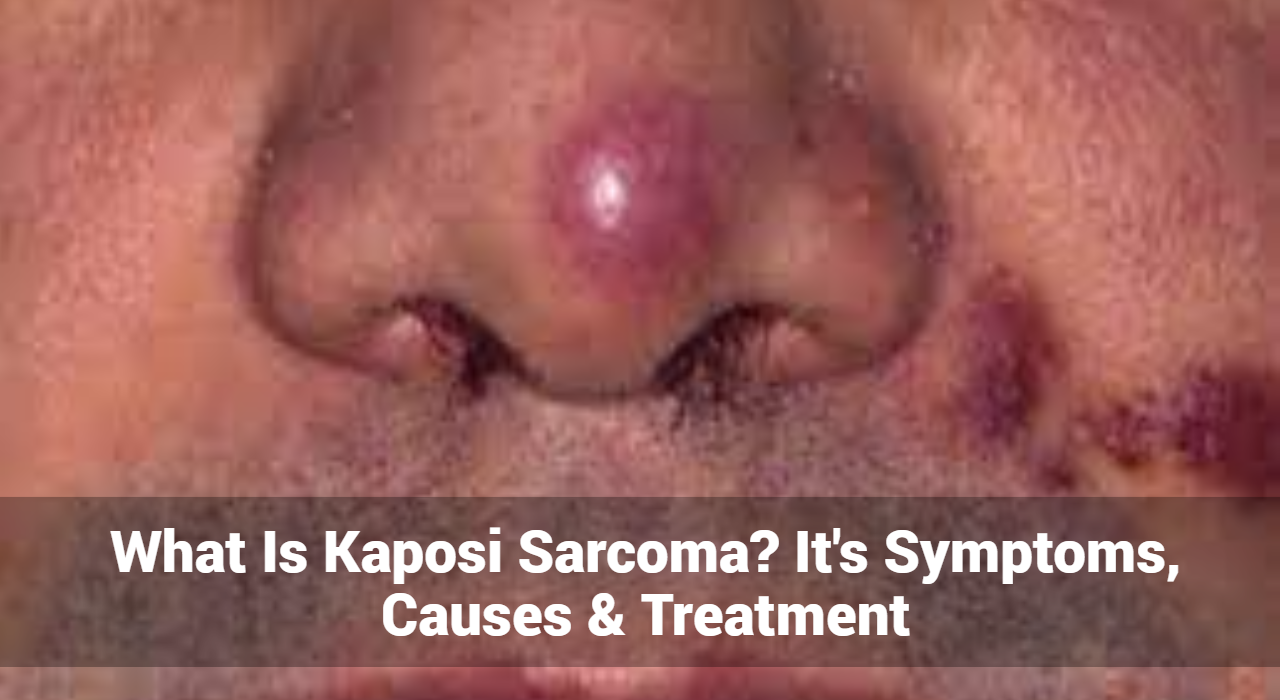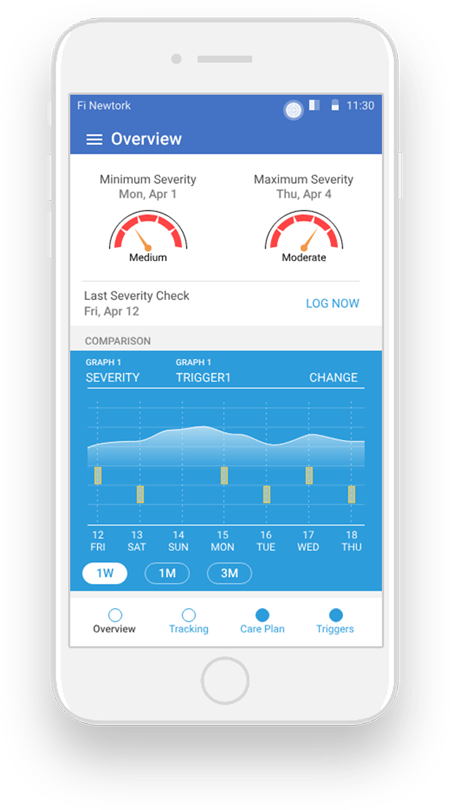What Is Kaposi Sarcoma? It’s Symptoms, Causes & Treatment

Kaposi Sarcoma (KS) is a type of cancer that originates in the cells lining the blood vessels and lymphatic vessels. This disease is known for causing abnormal growth of these vessels, resulting in various symptoms and health complications. Although Kaposi Sarcoma is relatively rare, understanding its symptoms, causes, and treatment options is crucial for effective management and better patient outcomes. This comprehensive guide aims to shed light on Kaposi Sarcoma, providing detailed insights into its various aspects.
What is Kaposi Sarcoma?
Kaposi Sarcoma is a malignancy that primarily affects the skin but can also involve mucous membranes, lymph nodes, and internal organs such as the lungs, liver, and gastrointestinal tract. The disease is characterized by the formation of reddish-purple or brownish lesions or spots, which may appear on the skin or mucous membranes. KS is often linked with immune system deficiencies and has different forms, including classic, endemic, epidemic (AIDS-related), and iatrogenic.
Different Types of Kaposi Sarcoma
- Classic Kaposi Sarcoma: Typically affects older men of Mediterranean or Eastern European descent. It generally progresses slowly and is often limited to the skin.
- Endemic Kaposi Sarcoma: Common in certain regions of Africa, particularly among younger individuals. It can be more aggressive compared to the classic form and may involve internal organs.
- Epidemic (AIDS-related) Kaposi Sarcoma: Associated with human immunodeficiency virus (HIV) infection and Acquired Immunodeficiency Syndrome (AIDS). This form tends to be more aggressive and can rapidly progress.
- Iatrogenic Kaposi Sarcoma: Linked to immunosuppressive therapy, often prescribed for organ transplant recipients. It usually appears when the immune system is significantly weakened.
Track and Manage your Eczema treatment using a comprehensive Eczema App
Download Eczemaless now
What Are The Symptoms of Kaposi Sarcoma?
The symptoms of Kaposi Sarcoma can vary based on the type and location of the lesions. Common symptoms include:
- Skin Lesions: Red, purple, or brown spots or patches that may appear on the skin, particularly on the legs, feet, or face. These lesions can be flat or raised and may be asymptomatic or cause discomfort.
- Mucous Membrane Lesions: Lesions may appear in the mouth, throat, or other mucosal surfaces, leading to difficulty swallowing or speaking.
- Swollen Lymph Nodes: Lymphadenopathy can occur if KS involves the lymphatic system.
- Gastrointestinal Symptoms: Abdominal pain, nausea, vomiting, and bleeding if internal organs are affected.
- Respiratory Symptoms: Cough, shortness of breath, and chest pain if the lungs are involved.
- Systemic Symptoms: Weight loss, fever, and night sweats may occur in more advanced cases.
What Causes of Kaposi Sarcoma?
Kaposi Sarcoma is caused by infection with Human Herpesvirus 8 (HHV-8), also known as Kaposi’s Sarcoma-associated Herpesvirus (KSHV). The virus is primarily spread through sexual contact and is prevalent among individuals with weakened immune systems. The risk factors for developing KS include:
- Immunosuppression: Individuals with compromised immune systems, such as those with HIV/AIDS or those undergoing immunosuppressive therapy, are at higher risk.
- HIV/AIDS: KS is strongly associated with HIV infection. The presence of HHV-8 in conjunction with HIV greatly increases the likelihood of developing KS.
- Age and Gender: Classic KS is more common in older men, while epidemic KS predominantly affects younger males.
- Geographic Location: Endemic KS is more prevalent in sub-Saharan Africa.
Diagnosis of Kaposi Sarcoma
Diagnosis of Kaposi Sarcoma typically involves a combination of clinical examination and diagnostic tests, including:
- Physical Examination: A detailed assessment of the lesions and symptoms.
- Biopsy: A sample of the affected tissue is examined microscopically to confirm the presence of KS.
- Imaging Studies: CT scans, MRI, or X-rays may be used to assess the extent of internal organ involvement.
- Blood Tests: To evaluate overall health and detect any signs of systemic involvement.
GET IN CONTROL OF YOUR ECZEMA
Use our AI tool to check the severity of Eczema and keep track of your Eczema progress.
What Are The Treatment Options of Kaposi Sarcoma?
The treatment of Kaposi Sarcoma depends on the type, stage, and location of the disease, as well as the overall health of the patient. Options include:
- Antiretroviral Therapy (ART): For AIDS-related KS, managing HIV with ART can lead to significant improvement in KS lesions and overall health.
- Chemotherapy: Systemic chemotherapy is used for more advanced or widespread KS. Agents like liposomal doxorubicin and paclitaxel are commonly used.
- Radiation Therapy: Effective for localized KS lesions, particularly those causing pain or discomfort.
- Immunotherapy: Treatments such as interferon-alpha may be used to boost the immune system and target KS cells.
- Surgical Treatment: For isolated lesions, surgical removal may be an option, especially if they cause significant symptoms or cosmetic concerns.
- Targeted Therapy: Newer approaches that specifically target cancer cells or their growth mechanisms are being explored in clinical trials.
Prognosis and Outlook
The prognosis of Kaposi Sarcoma varies widely depending on the type, extent of disease, and response to treatment. In general:
- Classic KS: Tends to have a slower progression and a better prognosis if limited to the skin.
- Endemic KS: May be more aggressive, with a variable prognosis depending on internal organ involvement.
- Epidemic KS: Prognosis improves significantly with effective antiretroviral therapy for HIV.
- Iatrogenic KS: May improve with adjustments in immunosuppressive therapy.
Conclusion
Kaposi Sarcoma is a complex disease with various forms and presentations. Early detection and tailored treatment strategies are essential for improving outcomes and managing symptoms effectively. Individuals at higher risk, such as those with HIV/AIDS or those undergoing immunosuppressive therapy, should be vigilant and consult a dermatologist or healthcare professional for regular monitoring and management.
By understanding Kaposi Sarcoma’s symptoms, causes, and treatment options, patients and caregivers can make informed decisions and work towards better management of this challenging condition. If you suspect you may have symptoms of Kaposi Sarcoma or are at risk, seek medical advice promptly for appropriate evaluation and care.
Track and Manage your Eczema treatment using a comprehensive Eczema App
Download Eczemaless now



